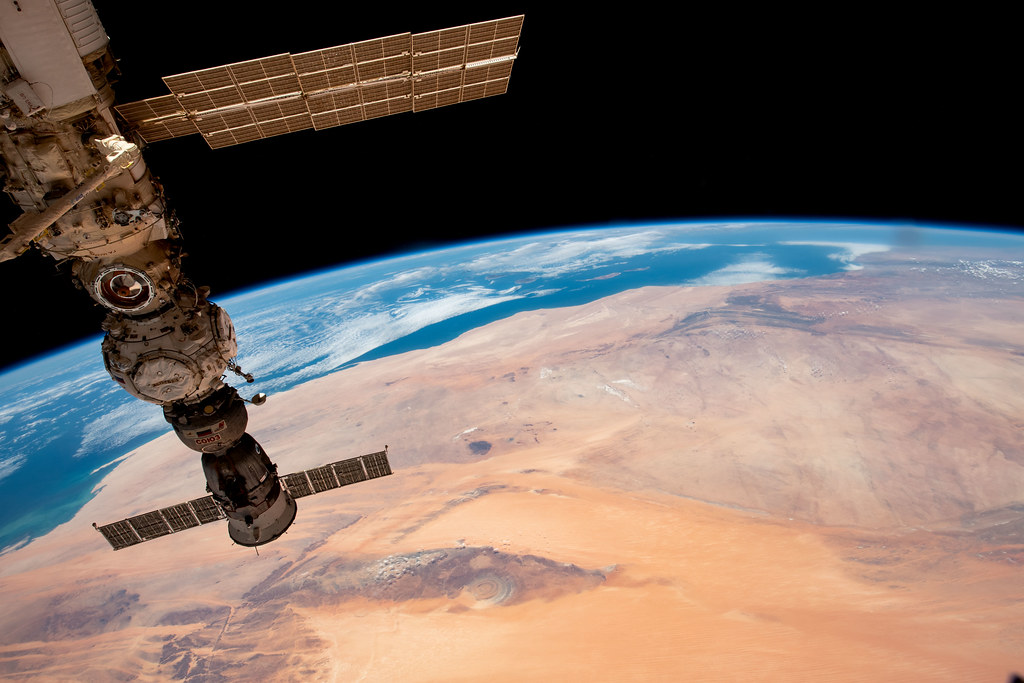The Richat Structure, also known as The Eye of the Sahara, is located in Mauritania within the Sahara Desert. Its exact location is easily accessible from the town of Oudane, just a couple of hours’ drive through the desert.
Yes, it is indeed possible to visit the Richat Structure while traveling through Mauritania. You just need to book flights to Nouakchott, the capital of Mauritania. Flights are available from Casablanca (Morocco), Tunis (Tunisia), Paris (France), or Dakar (Senegal). From Nouakchott, it’s a 9-hour drive to Oudane in the Atar Region. I recommend stopping in Atar first before continuing to Oudane. From Oudane, you can easily reach the center of the Eye of the Sahara or Richat Structure, driving 2 hours in 4WDs.

Planning your visit to the Richat Structure
For a truly enriching experience, consider exploring the historic cities of Chinguetti, Atar, and Oudane alongside your visit to the Eye of the Sahara. You can read our 6 days itinerary in Mauritania here for further information.
The months from November to March offer the most favorable conditions for exploring the Eye of the Sahara, with temperatures in the desert remaining relatively comfortable during this period.
Navigating the Sahara and its landmarks, including the Richat Structure, is best done with the assistance of local tour operators. These professionals organize essential transport via 4WD vehicles and provide accommodation (which is quite limited) in the surrounding towns.
Navigating the Sahara
For exploring the Eye of the Sahara, you need to dirve through the Dunes and once you get out of Oudane, there are no roads marked or paved. So only locals know the routes very well and also you can get your car stuck on the sand very easily

Geological Wonders
The Eye of the Sahara is a deeply eroded rock formation, a slightly elliptical dome with a diameter of 40 kilometers. It was discovered in the twentieth century. Easily recognizable from space due to its distinctive circular shape, it has garnered significant interest from scientists due to its unique features and mysterious origins. Despite its size, when viewed from the ground, the circular shape isn’t as apparent due to its immense scale.
Two things attract my attention, the landscape looks like planet Mars and also in the centre of the eye, you can find volcanic rocks implying that there was some lava formation. I was also told that to observe better some scientist or photographers hire a helicopter from Nouakchott.

There are different ideas about how the Eye of the Sahara was made. At first, people thought it was a crater from a big impact because of its round shape. But now, scientists think it’s more likely that it formed over a long time from erosion and natural processes. The most popular idea is that it happened when layers of rock were pushed up and then worn away, showing the layers underneath the ground.

Myths and Mysteries of The Eye of the Sahara
Legends of Atlantis
Among the many theories surrounding the Eye of the Sahara, the idea of it being linked to the mythical city of Atlantis remains particularly intriguing, fueling speculation about lost civilizations and cataclysmic events. Some proponents of this theory suggest that Atlantis was a real civilization that existed in the area before being destroyed by a cataclysmic event, leaving behind the circular structure as evidence.
Extraterrestrial Impacts
Speculation persists that the Eye of the Sahara could be the result of an extraterrestrial collision, with proponents drawing parallels between its features and impact craters found on celestial bodies.
Lost Civilizations
Similar to the Atlantis theory, some theorize that the concentric rings and central uplift of the Richat Structure conceal the remnants of an ancient civilization, shrouded in mystery and awaiting discovery beneath the sands of time.
Conclusion
The Eye of the Sahara still fascinates with its mysterious charm and geological story. Whether seen from space or explored up close, it showcases our planet’s wonders and the mysteries yet to be discovered.
Leave a Reply